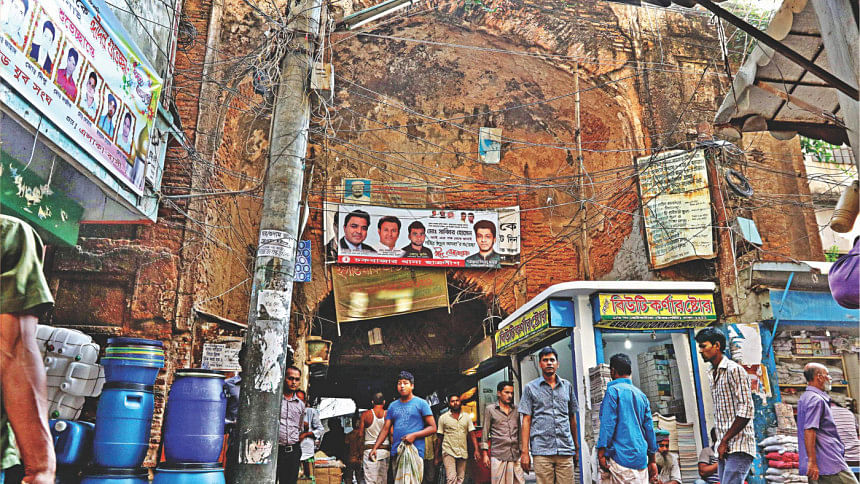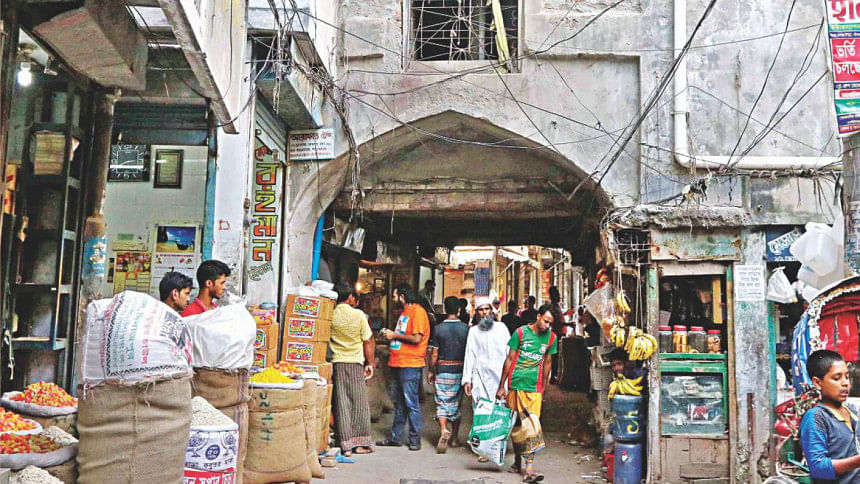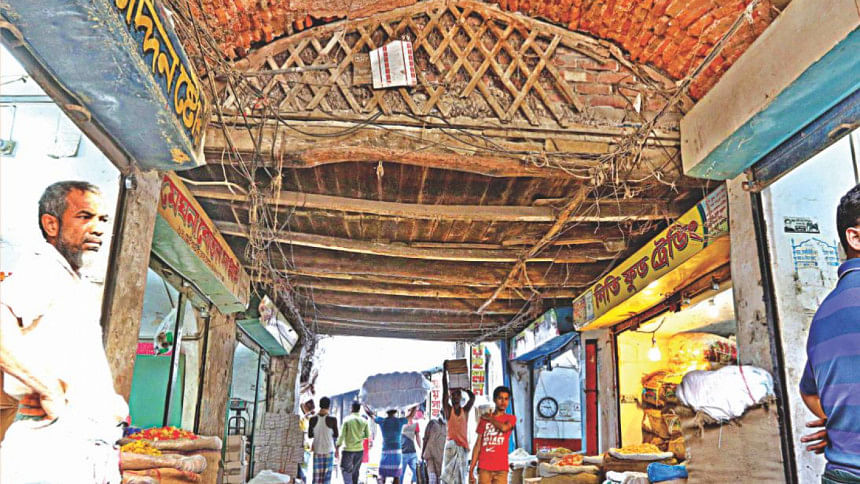Chhoto Katra on verge of destruction

Almost lost amid negligence and encroachment, it is hard to believe that Chhoto Katra was one of the places from where Bengal was ruled by Subedar Shaista Khan after he built it on the Buriganga river's bank in 1670.
According to historic sources, it was intended to be a shoraikhana (roadside inn) and administrative office for the Mughal officials and travellers.
The massive architecture consists two gateways. The southern three-storied one serves as the main entrance. In between that one and the one in the north lies a tomb of one Champa Bibi whose identity remains a mystery.
"All my life I have heard about Champa Bibi's Mazar, but neither my father nor I can exactly say who she was. I heard she was Shaista Khan's mistress while some say she was his wife," says Abdur Rahim, an Old Dhaka resident.
Now this historic Mughal architecture is being taken over by some land grabbers. It is impossible to imagine that anywhere else in the world one would find commercial structures being built on an archaeological site defying the Antiquities Act of 1968.
Rajdhani Unnayan Kartripakkha's (Rajuk) Detailed Area Plan does not mark it as a special archaeological zone.
"New structures are being built just beside Chhoto Katra," says architect Taimur Islam, CEO of Urban Study Group, an organisation campaigning for the conservation of architectural and urban heritage of Old Dhaka.
"When we informed Rajuk about this construction it was one storied and Rajuk pulled down some of the new construction's columns. I wonder, if they bulldozed the columns under the antiquities act, how the owner could have completed the whole building?" he asks.
Taimur said according to the act, 200 metres from the river and 250 metres from the monument are protected zones. And because of these encroachments the area connecting Chhoto Katra and the river cannot be found anymore.
Surrounded by numerous shops and factories, the wide walls of Chhoto Katra have been encroached on by high rise buildings ranging from five to six storeys.

Even though there is no legal owner, construction continues over Chhoto Katra. A teenage worker of Rabeya Toy on the upper floor of Katra says, "We have been using this place for a long time and we live here too."
The whole architecture is covered with illegal structures. The intricate ornamentations on the colossal gateways still standing tall in the middle of the busy, narrow, congested lanes are long gone; instead, they are now adorned with political campaigns or some posters.
Modern day aluminium-framed windows on the body of a Mughal monument will surely jar the sensibilities of heritage lovers, but that is how the people, who now occupy these heritage sites, have altered them.
Rakhi Roy, regional director of the Department of Archaeology, said they informed Rajuk about the ongoing encroachment but Rajuk did not take any steps.
"From our part we really want to preserve the site. But we do not have any magistracy power to stop this destruction. Rajuk has the authority to take immediate action," she said.
According to the department, the local community has altered and extended the Katras over the course of time according to their needs resulting in the present derelict condition.
The department formed a committee which worked on this project till 2012, setting a value of Tk 410 million for this asset. Since the recovery of the site involves the allocation of a large amount of money, the project was halted. Then again a new committee was formed and it failed to bring any change because of budget limitations.
Rakhi says, "It requires manpower and a lot of money. And we have no budget. Moreover, it was never easy on our part to take the requisition and have them officially documented as an archaeological site in government records as local people have taken over them since the British period."
Maybe within a few years Chhoto Katra will be turned into a quest for history enthusiasts and archaeologists and found only in the pages of history. We might need the help of archaeological tools too to dig out the buried history and artefacts of Chhoto Katra.


 For all latest news, follow The Daily Star's Google News channel.
For all latest news, follow The Daily Star's Google News channel. 



Comments